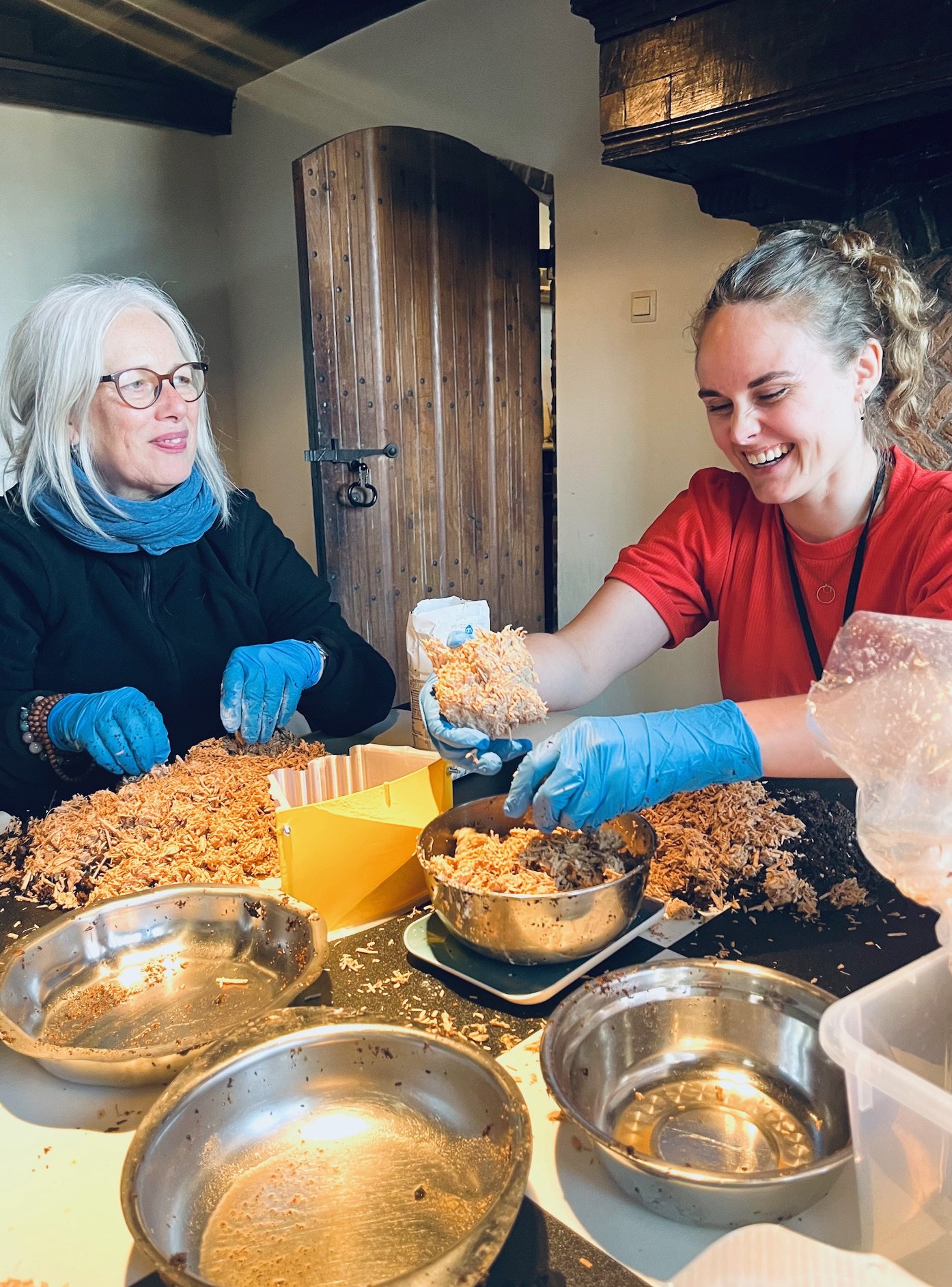Where to start? I’ve met many people this week and so there’s been lots of exchange, imaginative experiences, discussions about circularity, nature, humanity and more… and general feelings about it all.
Tuesday, I’ve had the pleasure to take part in the Radboud Impact Festival on the campus. We took a walk in the woods together with students, and did a make-believe exercise upon a biobased future as seen by other beings. This led to interesting reflections. My companions expressed their ideas of what it could mean to live closer to nature. We all agreed that we need a different understanding of who serves whom in this human and nature relationship. We imagined that cities could perhaps entangle more with the natural world in a biobased future and so both the human environment and natural environments would become pockets alongside each other. In this scenario, a few aspects that came from the students stayed with me: in such pockets humans would have to act very different than now and interfere as little as possible with the life of other species (empathy, more empathy!), and pockets of nature for the wild life would push large scale changes in the wild landscapes to become condensed, micro-landscapes of wild. Throughout the day, there’s been discussion about growing biobased stuff in a carbon neutral fashion with the help of natural occurring electric fields (think of the electric charge of a spot where lightening hits and how that affects the life of plants on that spot), about how innovation needs to distribute outside of patents for humanity’s sake, about the ownership we like to exercise on nature right now, and much more.
And then it was Wednesday again, and I welcomed two groups of participants in the Besiendershuis to put together bio-waste and fungus to let it grow into object pieces. This brought up plenty of reflections too. We talked about fungi in general, edible or non-edible, how difficult it actually is to grow them or grow with them. We talked about the extent to which what I do during this residence can be automated and the reality of it being applied into neighbourhoods in the future. The question that remains with me is: how much do you want to automate to still have an educational and playful experience around this new biobased adventure we’re in? We also spoke about how in this moment in time, the overall process is not perfect and leans on practices and products known to be part of the right-now non-sustainable situation. And we talked about how it is difficult to jump steps to perfect something without leaving some space for less desirable parts as well. What keeps coming back for me in all these exchanges is that all people who decided to be part of this journey don’t just partake. They take initiative, fill-in where needed and continue to think about what we are doing outside of our moments together. I think this is an important aspect to keep in mind in the context of our background culture of ‘the human is inherently bad’.
And now I am ready for the weekend, my headspace to let everything cook and settle for the next time.


































